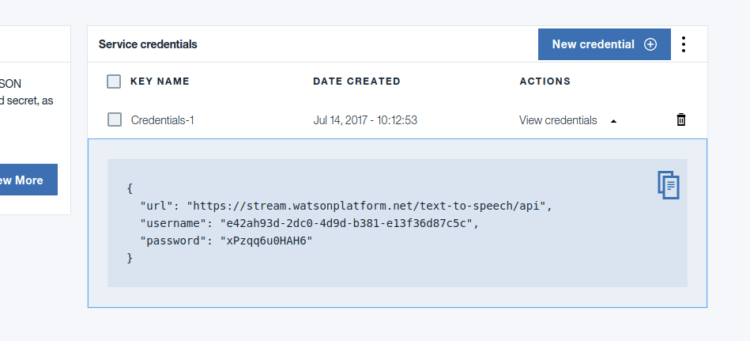Adding Push Wake Button to SUSI on Raspberry PI
SUSI Linux for Raspberry Pi provides the ability to call SUSI with the help of a Hotword ‘Susi’. Calling via Hotword is a natural way of interaction but it is even handier to invoke SUSI listening mode with the help of a Push button. It enables to call SUSI in a noisy environment where detection of Hotword is not that accurate.
To enable Push Wake button is Susi, we need access to Hardware Pins. Devices like Raspberry PI provides GPIO (General Purpose Input Output) Pins for interacting with Hardware Devices.
In this tutorial, we are adding support for Push Wake Button in Raspberry PI, though similar procedure can be extended to add Wake Button to Orange Pi, Beaglebone Black, and other devices. For adding push wake button, we require:
We now need to do wiring to connect button to Raspberry Pi. The button can be connected to Raspberry Pi following the connection diagram.

After this, we need to install the Raspberry Pi GPIO Python Library. Install it using:
$ pip3 install RPi.GPIO
Now, we may detect the press of the button in our code. We declare an abstract class for implementing Wake Button. In this way, we can later extend our code to include Wake Buttons for more platforms.
import os from abc import ABC, abstractclassmethod from queue import Queue from threading import Thread from utils.susi_config import config class WakeButton(ABC, Thread): def __init__(self, detection_callback, callback_queue: Queue): super().__init__() self.detection_callback = detection_callback self.callback_queue = callback_queue self.is_active = False @abstractclassmethod def run(self): pass def on_detected(self): if self.is_active: self.callback_queue.put(self.detection_callback) os.system('play {0} &'.format(config['detection_bell_sound'])) self.is_active = False
We defined WakeButton class as a Thread. This is done to ensure that listening to Wake Buttons is done in background thread and it does not disturb the main thread. The callback to be executed on main thread after button press is detected is added to callback queue. Main Thread listens on the callback queue and executes any pending functions from other threads.
We also play an Audio File additionally on detection of a button press to confirm the activation of detection to the user.
Now, we define Raspberry Pi Wake Button class. This class extends from abstract WakeButton declared above.
from queue import Queue import RPi.GPIO as GPIO import time from .wake_button import WakeButton class RaspberryPiWakeButton(WakeButton): def __init__(self, detection_callback, callback_queue: Queue): super().__init__(detection_callback, callback_queue) GPIO.setmode(GPIO.BCM) GPIO.setup(18, GPIO.IN, pull_up_down=GPIO.PUD_UP) def run(self): while True: input_state = GPIO.input(18) if not input_state: self.on_detected() self.is_active = False time.sleep(0.2)
This class defines the Wake Button for Raspberry Pi. We continuously poll for the input value of GPIO Pin number 18 on which button is connected. If value is negative, it indicated that button was pressed.
Now, we need to add an option if configuration script to give users a choice to enable or disable wake button. We first need to check, if device is Raspberry Pi, since feature is available on Raspberry PI only. To do this, we try to import RPi.GPIO module. If module loading fails, it indicates that device does not support Raspberry Pi GPIO modes. We set the configuration parameters according to it.
def setup_wake_button(): try: import RPi.GPIO print("Device supports RPi.GPIO") choice = input("Do you wish to enable hardware wake button? (y/n)") if choice == 'y': config['WakeButton'] = 'enabled' config['Device'] = 'RaspberryPi' else: config['WakeButton'] = 'disabled' except ImportError: print("This device does not support RPi.GPIO") config['WakeButton'] = 'not available'
Now, we simply use the Raspberry Pi wake button detector in our code.
if config['wake_button'] == 'enabled': if config['device'] == 'RaspberryPi': from hardware_components import RaspberryPiWakeButton wake_button = RaspberryPiWakeButton(callback_queue=callback_queue, detection_callback=start_speech_recognition) wake_button.start()
Now, when you need to invoke SUSI Listening Mode, instead of saying ‘SUSI’ as Hotword, you may also press the push button. Ask your query after hearing a small bell and get instant reply from SUSI.
Resources:
- Raspberry Pi GPIO Python Library Usage Examples: https://sourceforge.net/p/raspberry-gpio-python/wiki/Examples/
- Raspberry PI Push button usage guide: http://razzpisampler.oreilly.com/ch07.html
- Raspberry PI GPIO Documentation: https://www.raspberrypi.org/documentation/usage/gpio-plus-and-raspi2/









You must be logged in to post a comment.